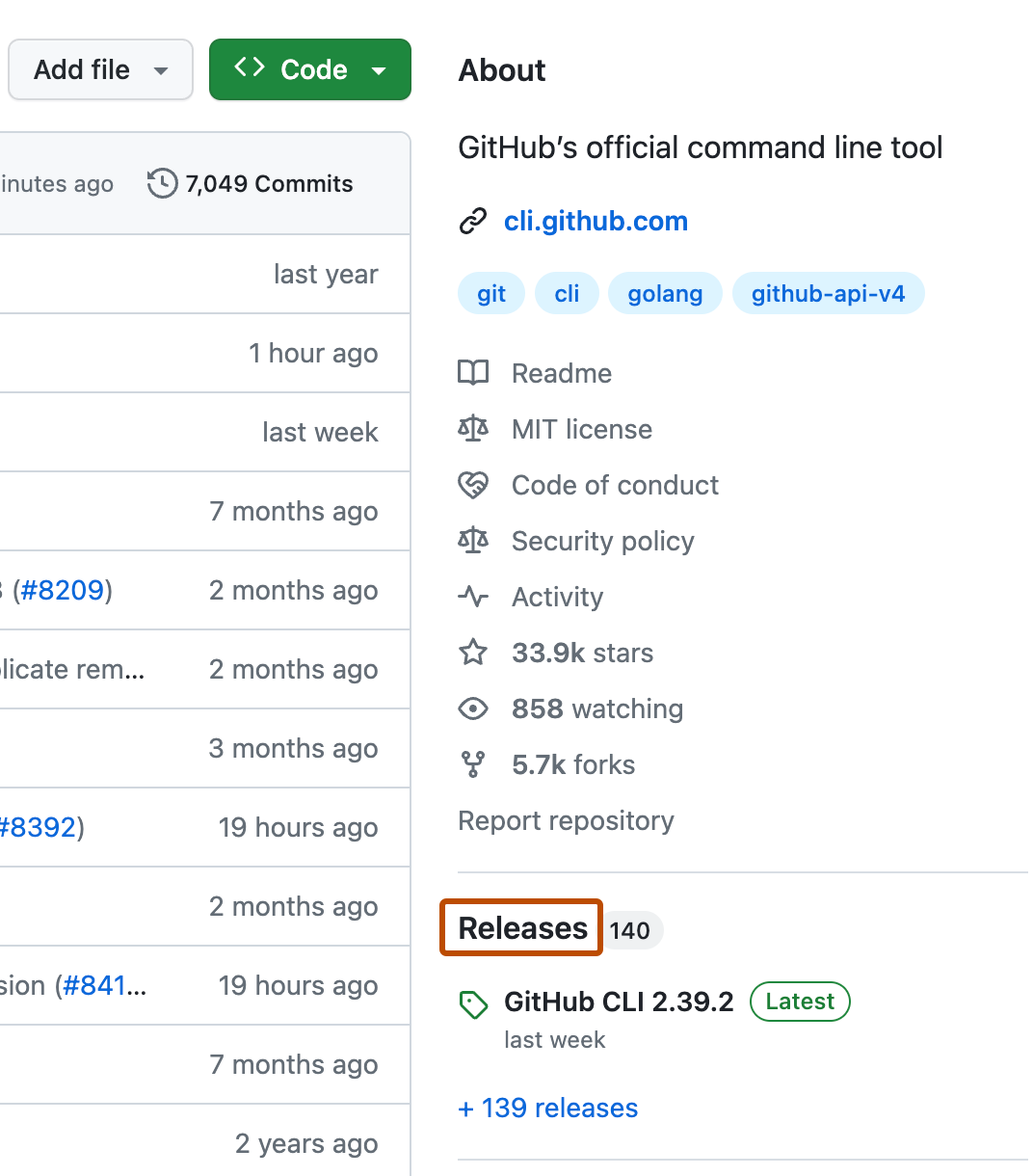Overview of source code archives
You can download a snapshot of any branch, tag, or specific commit from your GitHub Enterprise Server instance. These snapshots are generated by the git archive command in one of two formats: tarball or zipball. Snapshots don't contain the entire repository history. If you want the entire history, you can clone the repository. For more information, see "Cloning a repository."
Downloading source code archives
You can download the source code archives in three ways.
Downloading source code archives from the repository view
-
On your GitHub Enterprise Server instance, navigate to the main page of the repository.
-
Above the list of files, click Code.

-
Click Download ZIP.
Downloading source code archives from a release
-
On your GitHub Enterprise Server instance, navigate to the main page of the repository.
-
To the right of the list of files, click Releases.

-
Scroll down to the "Assets" section of the release.
-
To download the source code, click Source code (zip) or Source code (tar.gz).
Downloading source code archives from a tag
-
On your GitHub Enterprise Server instance, navigate to the main page of the repository.
-
To the right of the list of files, click Releases.

-
At the top of the Releases page, click Tags.
-
To download the source code, click zip or tar.gz.

Source code archive URLs
Source code archives are available at specific URLs for each repository. For example, consider the repository github/codeql. There are different URLs for downloading a branch, a tag, or a specific commit ID.
| Type of archive | Example | URL |
|---|---|---|
| Branch | main | https://github.com/github/codeql/archive/refs/heads/main.tar.gz |
| Tag | codeql-cli/v2.12.0 | https://github.com/github/codeql/archive/refs/tags/codeql-cli/v2.12.0.zip |
| Commit | aef66c4 | https://github.com/github/codeql/archive/aef66c462abe817e33aad91d97aa782a1e2ad2c7.zip |
Note: You can use either .zip or .tar.gz in the URLs above to request a zipball or tarball respectively.
Stability of source code archives
Source code archives are generated on request, cached for a while, and then deleted. If the same archive is requested again in the future, it'll be regenerated. It's important to understand what guarantees GitHub makes about source code archives.
- An archive of a commit ID will always have the same file contents whenever it's requested, assuming the commit ID is still in the repository and the repository's name has not changed.
- Because branches and tags can move to different commit IDs, future downloads of an archive may have different contents than previously downloaded archives of the same branch or tag. Assuming the branch or tag still points at the same commit ID, it will have the same file contents.
- The exact compression settings used to generate a zipball or tarball may change over time. The extracted contents won't change if the branch or tag doesn't change, but the outer compressed archive may have a different byte layout. GitHub will give at least six months' notice before changing compression settings.
- The name of the repository is part of the directory structure inside the archive. Therefore, if the repository name changes, the root directory name will change as well.
If you rely on stability of source code archives for reproducibility (ensuring you always get identical files inside the archive), we recommend using the archives REST API with a commit ID for :ref. Using the commit ID ensures you'll always get the same file contents inside the archive and you’ll be immune to repositories rewriting tags or moving branch heads.
If you rely on stability of archives for security (for example: to ensure you don't attempt to unzip a maliciously-crafted file), we recommend using releases instead of using source downloads. For more information, see "About releases."
You can use something like this third-party GitHub action to create and push these files as part of your release process. The Release Assets REST API can later be used to retrieve them.